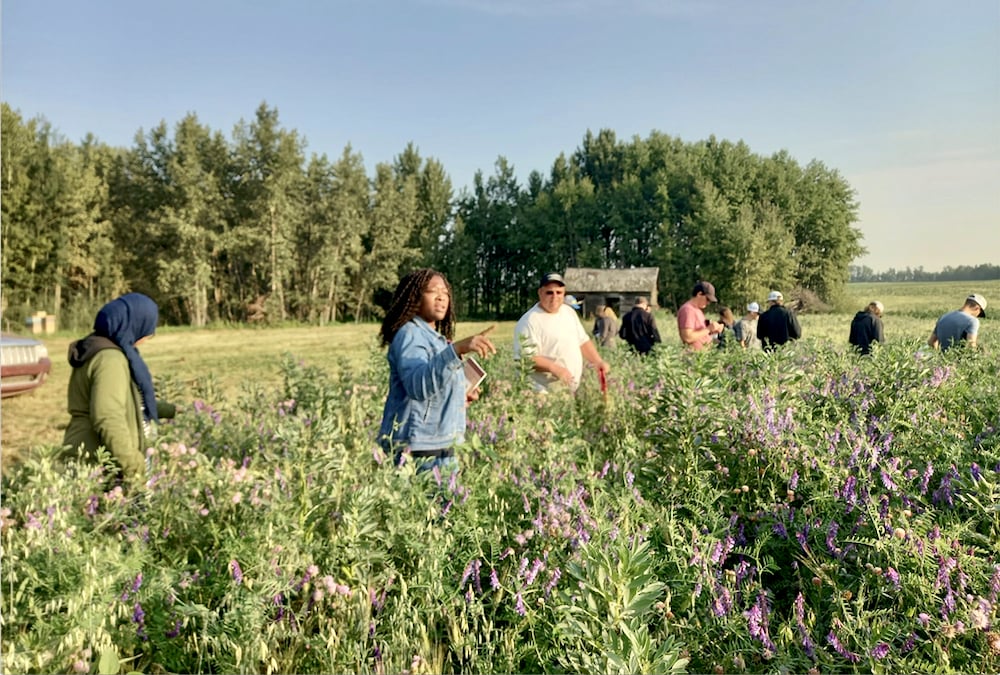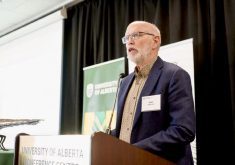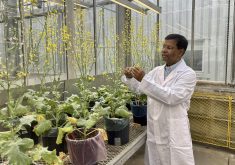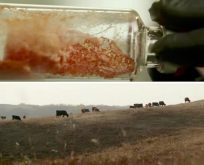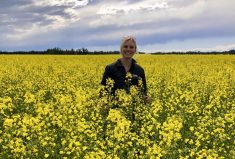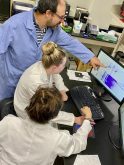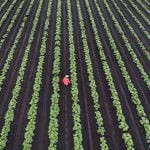Linda Gorim’s goal for her agronomy students is to give them a hands-on experience.
“My goal is to get them dirty, and I get them really dirty,” said Gorim, an assistant professor at the University of Alberta and the Western Grains Research Foundation chair in cropping systems.
Her field crop agronomy course was created to fill a gap in the university’s ag program.
Read Also
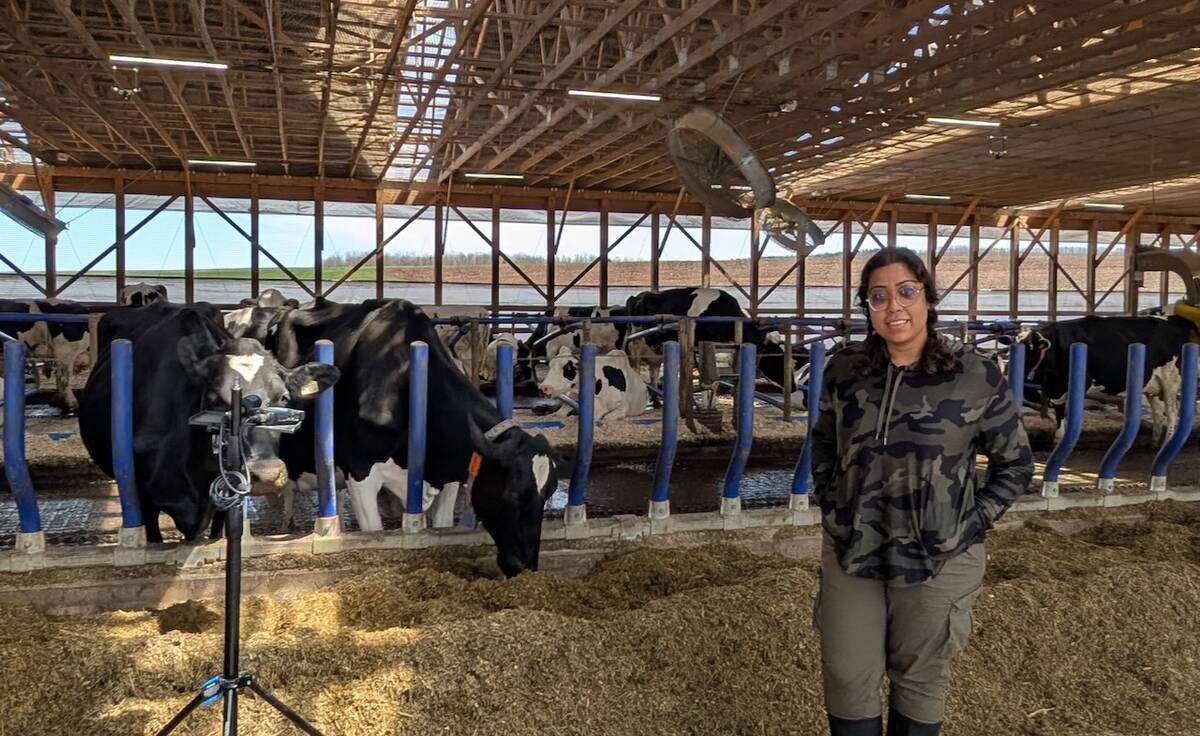
Moo translator and methane measures: There’s an app for that
Dalhousie University researchers use artificial intelligence to create new dairy farm apps that analyze cattle sounds and measure methane.
“We had no core agronomy course and the industry had said the program did not have experiential learning attached to it,” said Gorim, noting the course begins with an extended one-week-long field trip.
“This is not a ‘fun’ field trip. This is a ‘getting dirty’ field trip. It’s a combination of teaching students hard core agronomy and exposure to field experience.”
Many students were taking courses without setting foot on farms, including those from other countries who came here to learn about Canadian farming methods, she said.
“Most of the students come from countries where they are seen as experts,” said Gorim. “They come from government scholarships from those countries. It is not fair for them to come and watch videos.”
Students can see farming activities on the U of A’s south campus in Edmonton, but that is not adequate, she added.
“They need to see what a combine does, what a farmer in Canada drives, and climb on the tractor and see it and see all the processes, how the combine cuts through the crop, and where does the crop go,” she said. “Those are the things that I want them to touch and see.”
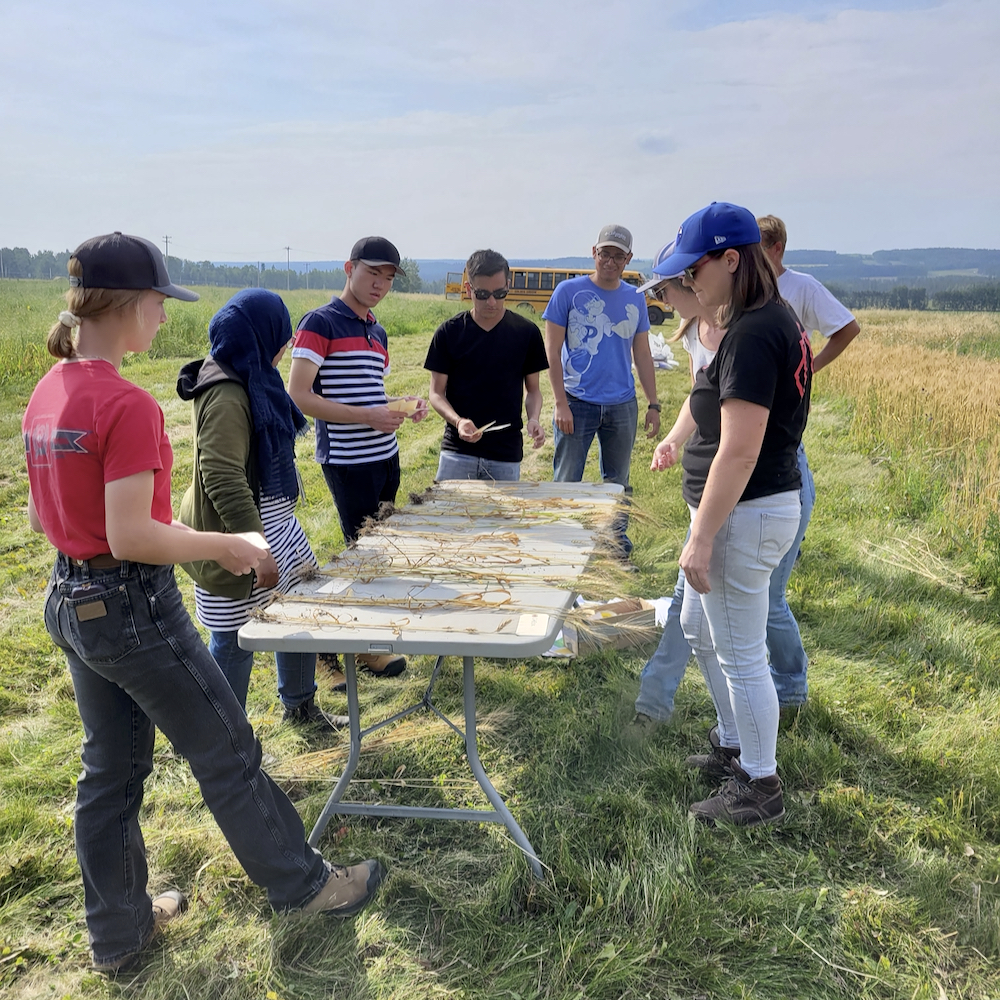
That includes exercises in identifying issues such as nutrient deficiency and clubroot, learning about seed treatments, how different seeding depths affect plant development, and seeing production practices such as grain drying.
The field tour stops included research projects conducted by the Gateway Research Organization in Westlock and Battle River Research Group near Forestburg, as well as the university’s Breton Plots, the nearly century-old research facility in Brazeau County. The students also visited an irrigated operation and seed retailer near Bow Island.
Getting to various parts of the province is important, said Gorim.
“That’s really intentional. Students who grew up on farms in central Alberta have no clue that there are people who grow up on farms in the same province growing crops in irrigation systems,” she said.
“I am surprised that students will get degrees from the same province, and they don’t even know what is happening in the province.”
The course attracts students from both city and farm. In her first year of teaching the course, Gorim had five urban students and two rural, although in the second year, 12 of 14 students came from farms.
Although she brings in “quite a number of agronomists and farmers to the classroom,” she said nothing matches learning in the field. For example, looking at photos of insect damage in a textbook is far different than what is encountered in the field.
“In the field, it’s not that clear cut,” she said. “This makes them work and learn.”
Of course, students have a bit of help — from one of the top bug experts in the province. Boyd Mori, assistant professor in agricultural and ecological entomology, joins the field trip and shows the students how to sweep for insects and identify them.
Farmers are also big part of the curriculum. At a stop near Camrose, the students meet with a group of producers that Gorim has invited to participate.
When producers come to the classroom, they might talk about bookkeeping or how to track profitability or about what’s involved when moving from traditional conventional agriculture to regenerative farming or about technology that’s used on farms.
But hearing the personal experiences of farmers resonates, said Gorim.
“I’ve got a lot of encouraging feedback from the students, from the farmers, from the scientific community,” she said. “This is agronomy. It impacts the students and the farmers. These will be their future employers.
“I think getting this in the classroom puts them in a better position.”
The course has received grants from the Western Grains Research Foundation, Alberta Wheat and Barley and Alberta Canola because funding is needed to support the field trip portion of the course, said Gorim.


